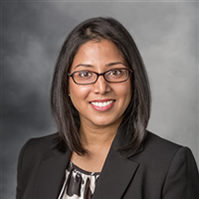Comprehensive Eye Exams
Who should have a comprehensive eye exam?
- All children who have failed a vision screening at the pediatrician or at school, as soon as possible after the referral is made
- Children with a family history of retinoblastoma, congenital cataracts or congenital, infantile, or juvenile glaucoma
- Children with significant prematurity
- Children with systemic conditions that may affect their eyes and vision
- Children with developmental delays or children in whom the teachers, specialists, or physicians feel vision may be contributing to learning issues.
- Children with a strong family history of childhood eye conditions, such as amblyopia (“lazy eye”), strabismus (eye misalignment), early need for eyeglasses, or early onset blindness.
- Children who demonstrate signs and symptoms of eye conditions or vision problems either on their pediatrician’s exam or who are reported to have these by their parents and family members.
Dr. Ledoux and Dr. Johnson are experienced in providing eye exams for children of all ages and abilities!
What is done during a comprehensive eye exam?
A comprehensive eye exam includes measurement of vision (tailored to the age and capabilities of the child), assessment of eye alignment and eye movements, measurement of refractive error (to determine if an eyeglass prescription is needed) and evaluation of the health of the outside and inside of the eye. In order to assess the health of the inside of the eye, eye drops must be used to dilate the pupils. Eye drops also help the doctor assess the refractive error more accurately in children. The eye drops do blur the vision (particularly near vision) but this resolves by 3-4 hours after they have been placed. In some children, although their near vision will return to normal, you may notice their pupils remain at least partly dilated for even a day or two after the drops were placed.
How is a pediatric eye exam different from an adult eye exam?
Eye exams for young children often rely on objective measurements rather than rely on subjective responses from the child. For example, we can use an instrument called a retinoscope to measure the refractive error (the need for an eye glass prescription) by observing the light reflex in the eye and how it changes with different powers of lenses. Eye exams for young children also focus on conditions that are most likely to affect children. Pediatric eye exams can be fun and tailored to the developmental abilities of your child, which was the goal of our office when we designed it. If you have specific concerns about the exam or have questions that will help prepare your child for the exam, please do not hesitate to give our office a call in advance of the appointment.


